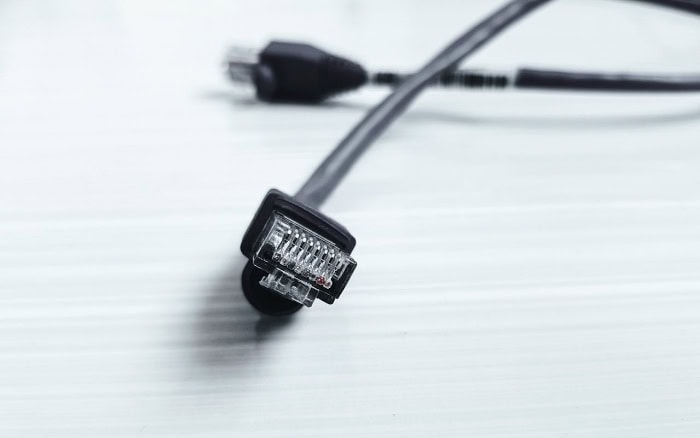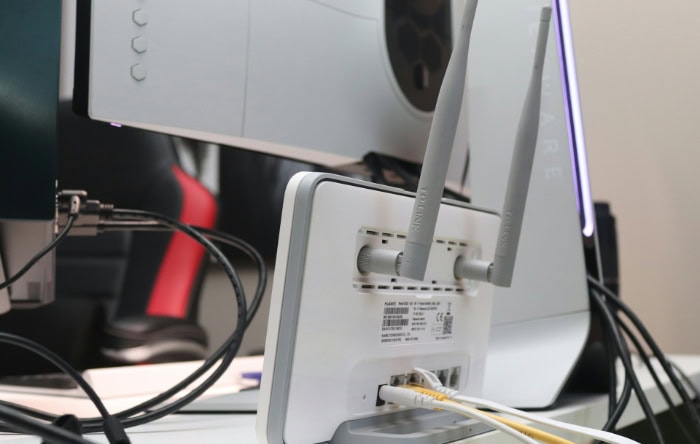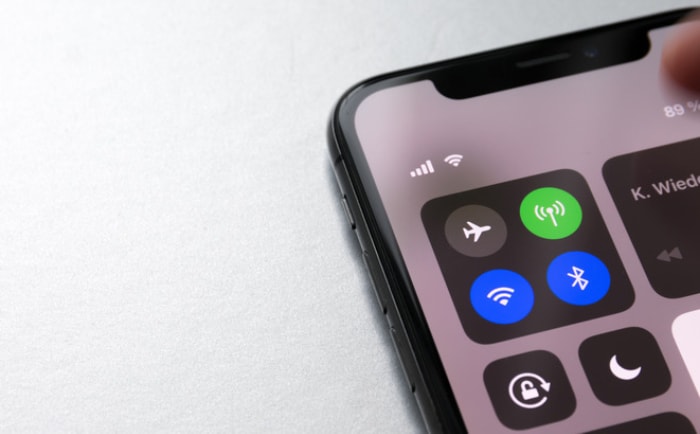Cat5 vs. Cat6: Upgrade Decisions Made Simple

Smooth streaming, lightning-fast downloads, and lag-free gaming often come down to the cables running behind the scenes. For home users, IT professionals, and small business owners alike, the choice between Cat5e and Cat6 can make a noticeable impact on daily internet experiences and future-proofing investments.
Subtle differences in design and performance separate these two popular options, each excelling under specific conditions and budgets.
Performance and Speed Capabilities
Choosing between Cat5e and Cat6 cables often starts with comparing their performance, speed, and reliability. Cables do more than just connect devices; they determine how efficiently information travels within your network.
Speed, bandwidth, and interference resistance can significantly affect your everyday experiences, from streaming your favorite shows in 4K resolution to backing up large files or enjoying lag-free online gaming.
Maximum Speed and Bandwidth
Bandwidth defines how much data a cable can transmit at any one time, while speed reflects how quickly that data moves. Cat5e cables support speeds up to 1 Gbps and handle frequencies up to 100 MHz.
For many typical home and small office uses, such as web browsing, HD streaming, and standard file transfers, Cat5e usually meets expectations.
Cat6 cables, on the other hand, step up the game considerably. They can handle speeds up to 10 Gbps at frequencies up to 250 MHz.
This significant boost supports bandwidth-heavy activities like 4K video streaming, online gaming with minimal latency, and large-scale data transfers between servers or devices. In high-demand environments where every millisecond counts, Cat6 delivers a noticeable edge.
Crosstalk and Interference Resistance
Performance isn’t just about raw speed; signal clarity plays a major role as well. Crosstalk, which is unwanted interference from adjacent wires, can corrupt data and slow down communication.
Cat5e cables reduce some crosstalk through improved wire twisting over earlier Cat5 models, yet they can still struggle in areas where electromagnetic interference is high, such as near heavy machinery or dense wiring clusters.
Cat6 cables are designed to minimize crosstalk even further. Their internal structure includes tighter twists and sometimes a plastic separator known as a spline, which physically separates the wire pairs.
Some versions also incorporate shielding for an extra layer of protection. These features allow Cat6 cables to maintain stable, high-speed connections even in challenging environments filled with electronic devices.
Distance Limitations
How far your cable runs can also impact the speed you achieve. Cat5e cables maintain their full 1 Gbps speed reliably over distances up to 100 meters, making them suitable for most household and small office installations.
Cat6 cables also support 1 Gbps at 100 meters, but to reach their maximum 10 Gbps speed, the length should not exceed about 55 meters. Beyond this range, performance may diminish due to signal loss and increased crosstalk.
For setups demanding top speeds over longer runs, specialized Cat6a or fiber optic solutions might be better options. However, for most home or office networks, understanding these distance limitations helps ensure the chosen cable meets both current and future networking needs.
Physical Construction and Durability

Physical design plays a significant role in the everyday reliability and long-term value of an Ethernet cable. Materials, thickness, and special internal features all contribute to how a cable performs, especially under stress or in environments with high levels of electrical interference.
Cat5e and Cat6 cables may look similar at first glance, but a closer inspection reveals several differences that affect their strength, resilience, and overall function in modern networks.
Conductor Thickness and Materials
Copper comprises the core of both Cat5e and Cat6 cables, but the wires themselves differ in thickness. Cat5e uses 24 AWG (American Wire Gauge) copper conductors, while Cat6 steps up to a thicker 23 AWG copper core.
Thicker copper not only improves electrical conductivity but also provides slightly more rigidity, allowing Cat6 to handle higher frequencies and faster data transmission rates with less signal loss. The type of copper used impacts flexibility as well, with solid copper being preferred for longer runs and stranded copper offering greater bendability for patch cables.
Internal Design Features
The inside of an Ethernet cable is more intricate than it appears from the outside. Cat5e relies on twisted wire pairs to reduce crosstalk and interference, and for most basic setups this is usually sufficient.
Cat6, aiming for heightened performance and stability, introduces a few extra features. Many Cat6 cables incorporate a plastic spline, or cross separator, which physically keeps the wire pairs apart and further limits internal interference.
Thicker insulation wraps around each conductor, providing better protection from outside interference and helping maintain the integrity of high-frequency signals. Some Cat6 options include foil or braided shielding for environments that demand extra defense against electromagnetic interference, making them suitable for industrial settings or areas crowded with other electronics.
Durability and Lifespan
Construction quality has a direct influence on how long a cable will remain effective, especially in demanding or high-traffic environments. The sturdier build and superior shielding found in Cat6 cables allow them to better withstand physical stresses, frequent handling, and exposure to electromagnetic noise.
While Cat5e can serve reliably for standard home use, its thinner wires and lighter insulation may wear out sooner, particularly when cables are run through walls, ceilings, or exposed areas that see movement or temperature change. Cat6, thanks to its stronger construction and advanced materials, typically offers a longer service life and higher tolerance for challenging conditions, translating to fewer replacements and more consistent network performance over time.
Cost Analysis and Value Proposition

Price often influences cable selection, especially when upgrading an entire network or working within a budget. Beyond the upfront expense, it is important to evaluate how cable choice impacts long-term value, potential for future upgrades, and overall satisfaction.
Weighing cost against performance and forward compatibility helps ensure your investment aligns with your current needs and future ambitions.
Upfront Cost Comparison
Cat5e has dominated the market for years due to its affordability and reliability in everyday use. Its low price makes it an attractive option for homeowners and small businesses that may need to install long cable runs without significantly increasing project costs.
Cat6 cables typically come with a 10–20 percent price premium compared to Cat5e, mainly because of their thicker construction, enhanced shielding, and improved performance specifications. While the price difference is noticeable, it remains marginal relative to the overall cost of a full network installation, especially if only a few cables are needed.
Long-Term Value and Future-Proofing
Spending a little more up front can bring tangible benefits in the long run. Cat6 cables are engineered to handle much higher data rates and frequencies, making them a solid choice for anyone considering equipment upgrades or anticipating increased internet speeds.
As smart homes, advanced gaming consoles, and 10 Gbps network devices become more widespread, Cat6’s extra bandwidth and interference resistance prove valuable. Once installed, Cat6 typically requires fewer replacements and remains compatible with emerging technologies, so the initial investment pays off over time for users who plan to get the most out of their network.
Cost-Benefit for Different Users
The decision between Cat5e and Cat6 depends on the scale of your networking needs and how soon you expect to require higher speeds. For basic web browsing, light streaming, or connecting devices at 1 Gbps or less, Cat5e often makes sense and keeps costs minimal.
However, users planning to stream 4K content, move large files frequently, or run demanding applications will find Cat6’s higher price justified by its added performance and durability. Business users, tech enthusiasts, or anyone building a new network infrastructure may prefer Cat6 to avoid the hassle and expense of frequent upgrades.
Balancing current requirements against future expectations helps determine whether saving now or investing for the future offers greater value.
Ideal Use Cases and Environments

Selecting the right Ethernet cable is about matching the cable’s strengths to the needs of your space. Performance potential, environmental challenges, and the types of devices being connected all play a part.
Some settings only require modest speeds and minimal interference control, while others demand robust cables built to handle heavy traffic or challenging conditions.
Home and Small Office Networks
Home users and small office environments typically have moderate networking demands. Cat5e is a practical, cost-effective solution for connecting computers, smart TVs, printers, and IoT devices when most internet activity centers around web browsing, email, video calls, or streaming HD video.
Its ability to maintain speeds up to 1 Gbps over typical residential distances ensures smooth performance for day-to-day needs. Installation is straightforward, and its flexibility makes it easy to run behind walls or inside conduits without specialized knowledge or tools.
For spaces with limited bandwidth needs or where cost is a concern, Cat5e provides enough capability to handle core networking tasks without overkill.
Data Centers and High-Performance Setups
Complex environments such as data centers, media production studios, or enterprise networks place much higher demands on their cabling. Cat6 steps into the spotlight here, offering 10 Gbps speeds and greatly reduced crosstalk, which is a distinct advantage in spaces containing rows of servers or network-attached storage systems.
Professionals who work with large datasets, 4K or 8K video files, or need to facilitate high-speed backups appreciate the added bandwidth Cat6 brings. The cable’s ability to reliably transmit large amounts of data at high speed supports operations that can’t afford lag or interruptions, which is vital in mission-critical business setups.
Its robust construction also ensures continued high performance even when routed through crowded equipment racks or exposed to moderate physical stress.
Industrial and High-Interference Settings
Factories, warehouses, and other industrial locations present unique networking challenges due to electrical equipment, machinery, and dense infrastructure. Electromagnetic interference can wreak havoc on less-protected cables, leading to signal loss and unreliable connections.
Cat6 is engineered to resist such interference, with improved shielding and thicker insulation to safeguard data traveling through noisy environments. Its enhanced physical construction not only ensures more consistent performance but also extends cable lifespan, reducing maintenance and downtime.
For situations where high reliability and minimal signal degradation are essential, Cat6 delivers the durability and resilience necessary to keep systems online and performing smoothly.
Key Decision-Making Factors

Selecting an Ethernet cable for your home, office, or business involves more than just picking the fastest or least expensive option. The decision should weigh current needs, future upgrades, environmental factors, and budget against the actual capabilities each cable offers.
Smart planning now helps avoid unnecessary costs or performance issues down the line.
Assessing Speed and Bandwidth Needs
Evaluating your current internet plan and future requirements is a logical starting point. Users on basic residential plans, rarely exceeding 1 Gbps, can get reliable results from Cat5e.
Most households browsing the web, streaming HD content, or working remotely experience little bottleneck with Cat5e, provided cable runs do not exceed recommended distances. Households or businesses anticipating faster gigabit speeds, upgrading to multi-gigabit connections, or supporting large file transfers should look to Cat6 for its 10 Gbps support and higher frequency handling.
Future-proofing your network by installing Cat6 now can prevent the need for disruptive upgrades as bandwidth demands grow.
Environmental Considerations
Not all environments treat cables equally. Placement near heavy equipment, power lines, or in rooms with a dense concentration of electronics increases the risk of electromagnetic interference, which can degrade signal quality.
Cat6’s superior shielding and construction minimize these disruptions, making it better suited for high-interference settings such as server rooms, workshops, or industrial spaces. Cable length and installation complexity also matter.
Cat5e reliably delivers advertised speeds up to 100 meters, while Cat6 maintains its 10 Gbps advantage only to about 55 meters. Longer runs or complex building layouts may require additional planning and possibly higher-grade solutions to maintain optimal performance.
Budget vs. Performance Tradeoffs
Cost remains a consideration for nearly every project. Cat5e’s lower price appeals to users focused on value for basic connectivity needs, particularly in smaller homes or offices where high bandwidth is unnecessary.
For those prioritizing performance, reliability, or future scalability, Cat6’s modest price premium is outweighed by its potential for higher speeds and greater resistance to interference. Balancing present needs against likely future developments helps determine if up-front savings justify choosing Cat5e or if Cat6’s enhanced capabilities warrant the additional investment.
Assessing the scale of your network, the types of devices you intend to connect, and any expectations for expanding capacity will clarify the smartest fit for your environment.
Conclusion
Cat5e and Cat6 each bring unique strengths to modern networking. Cat5e shines in everyday scenarios, offering reliable gigabit speeds at an accessible price for home users and small offices where basic browsing, HD streaming, and device connectivity are the main priorities.
It keeps installation costs low while delivering consistent performance for the majority of household needs.
Cat6, on the other hand, stands out for users seeking higher speeds, increased bandwidth, and better resistance to interference. Its advanced construction makes it especially well-suited for environments with demanding data requirements, such as data centers, 4K video editing suites, and industrial locations where electromagnetic interference is a concern.
Cat6 also provides a greater degree of future readiness, accommodating the shift to multi-gigabit networks and more connected devices.
For those building or upgrading networks, the decision comes down to current demands, anticipated future needs, and budget. Cat5e remains a smart, cost-effective choice for straightforward tasks and limited bandwidth usage.
Cat6 is the better investment for anyone anticipating heavier network traffic, complex installations, or the need to stay ahead of evolving technology. Matching the cable to your specific environment and goals ensures you get both the performance and value you deserve.


